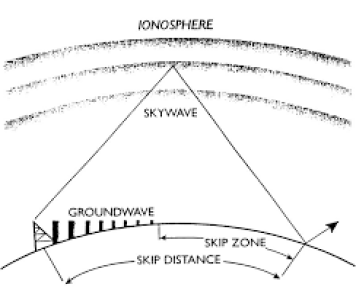
NVIS stands for Near Vertical Incidence Skywave. You’ll remember from our earlier notes on radio wave propagation that when operating on HF, there’s a skip zone where a signal won’t be detected because it’s too far away from groundwave propagation and too far away for skywave propagation. This isn’t an issue for DXing, where you want to make contacts as far away as possible, but it can be an issue if you want to communicate regionally but at a longer distance than VHF will allow (or if you are trying to communicate over significant terrain features like mountains).
The concept of NVIS is simple, you’re sending a targeted signal nearly straight up into the ionosphere and allowing it to bounce back down at a similarly steep angle. This shrinks or eliminates the skip zone entirely at the cost of losing your long range communications ability. Typically limiting you to an operating radius of less than 500 miles.
Generally the 40m, 60m and 80m bands are best used for NVIS with some limited utility found in the 20m band.
An NVIS antenna should a horizontally polarized antenna. One example is a horizontal wire dipole positioned off the ground about 1/4 wavelength high. The length of the radiating element is typically 234/f = length in feet. (divide the frequency by 234). You can enhance the performance of this antenna through use of a counter-poise — a wire used as a reflector under the radiating element.
Another good antenna option for NVIS is the inverted vee dipole or the vee dipole.